Male flower?
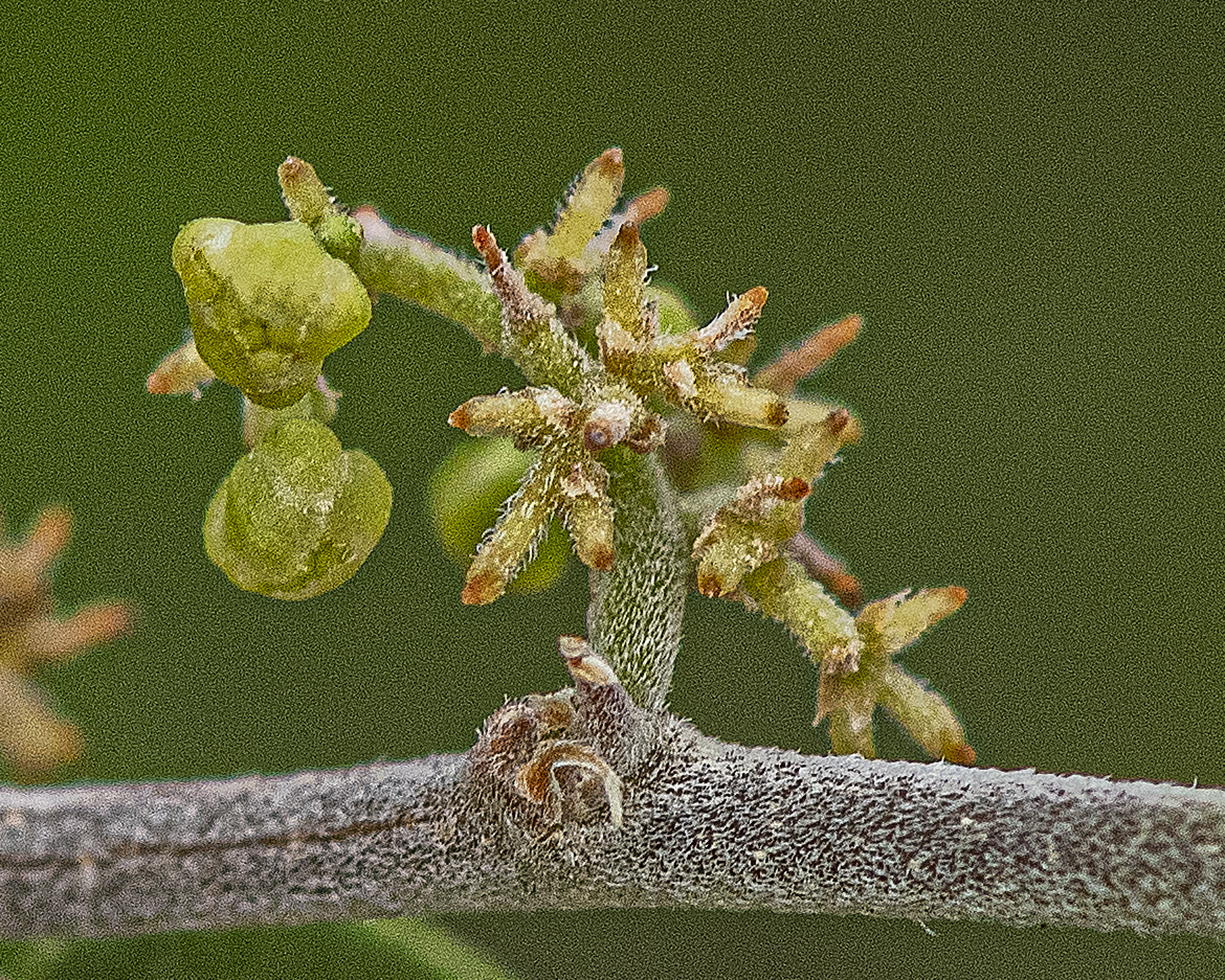 Female flower?
Female flower?
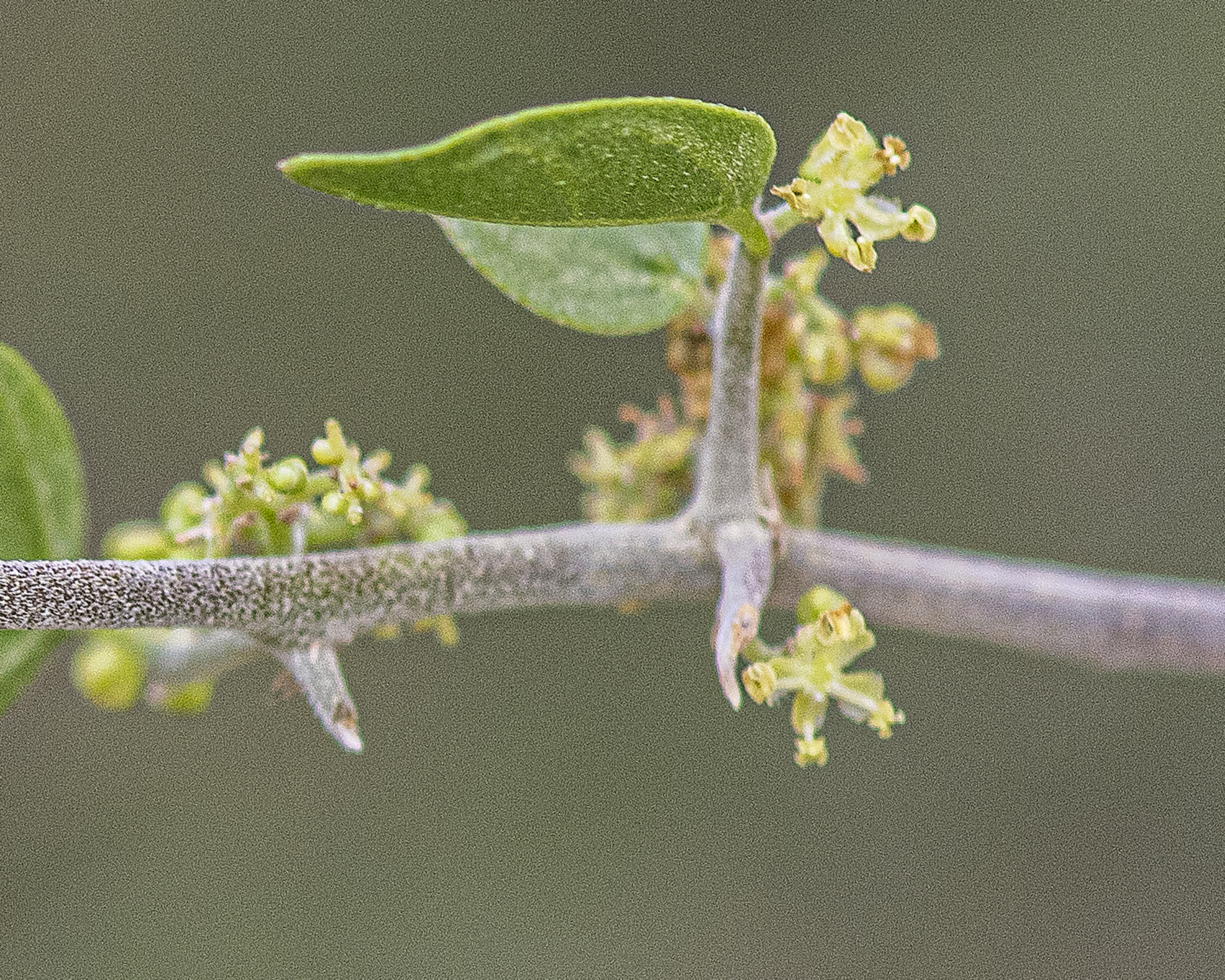 Sabino Canyon 9/28/19. Enlarging ovary.
Sabino Canyon 9/28/19. Enlarging ovary.
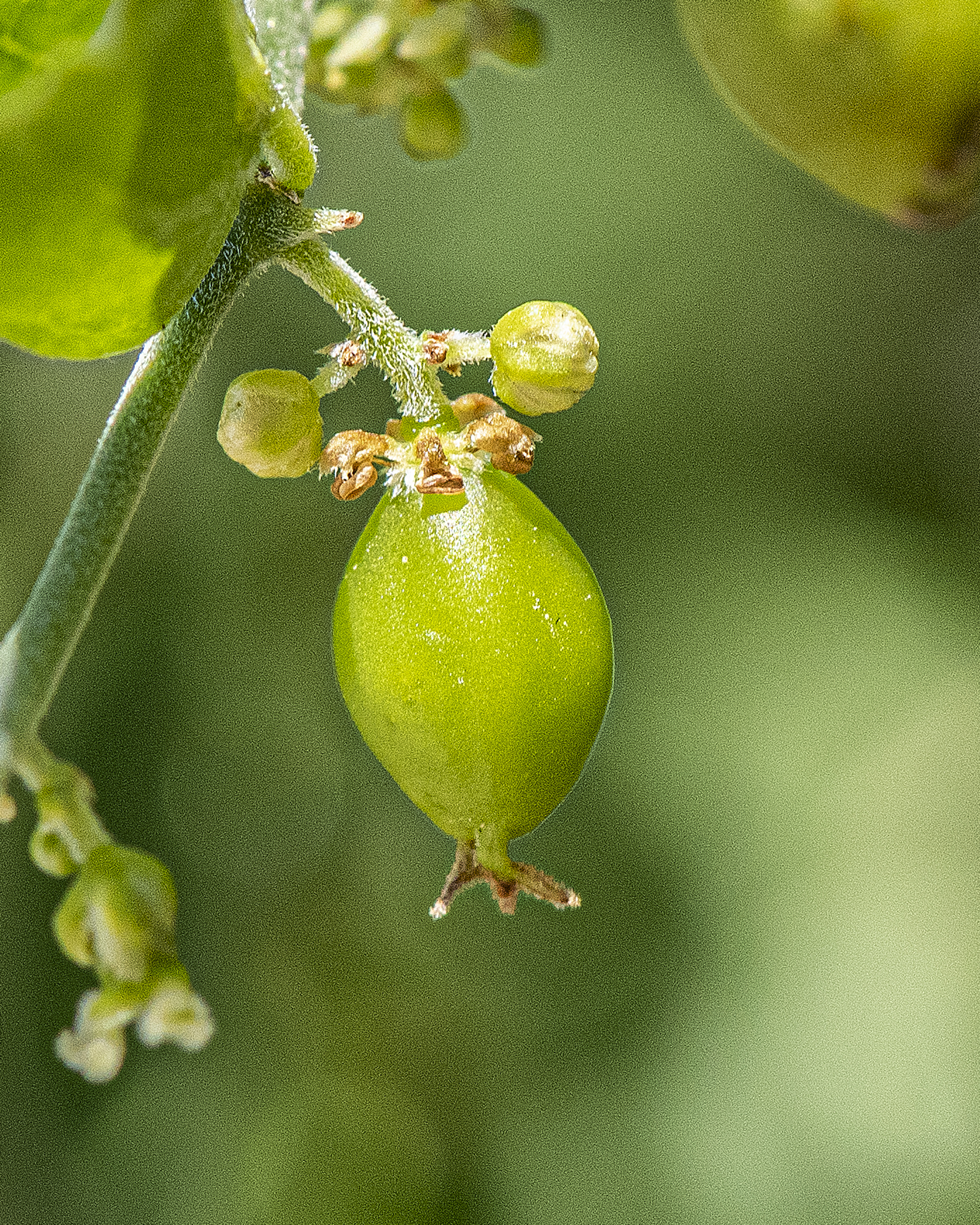
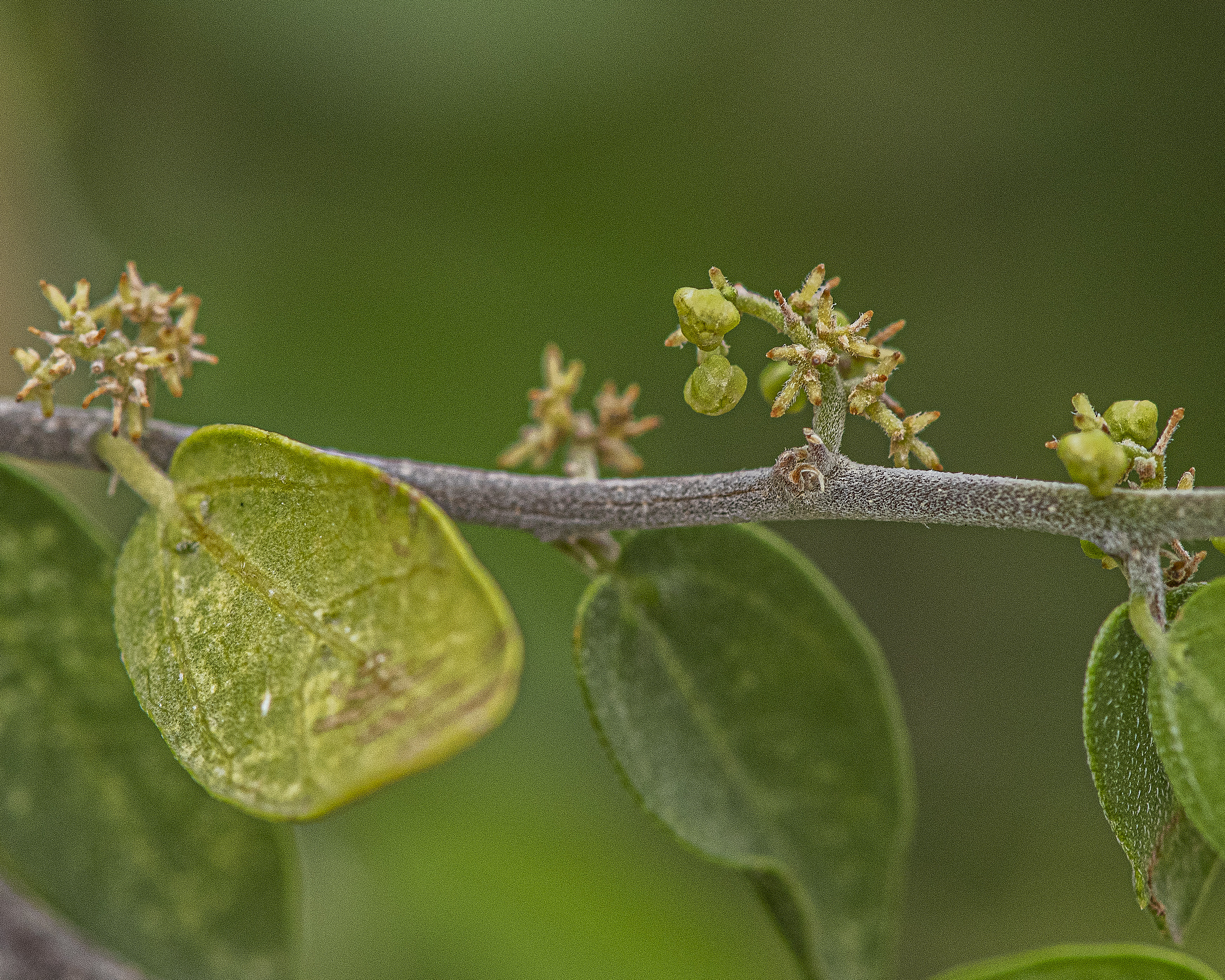
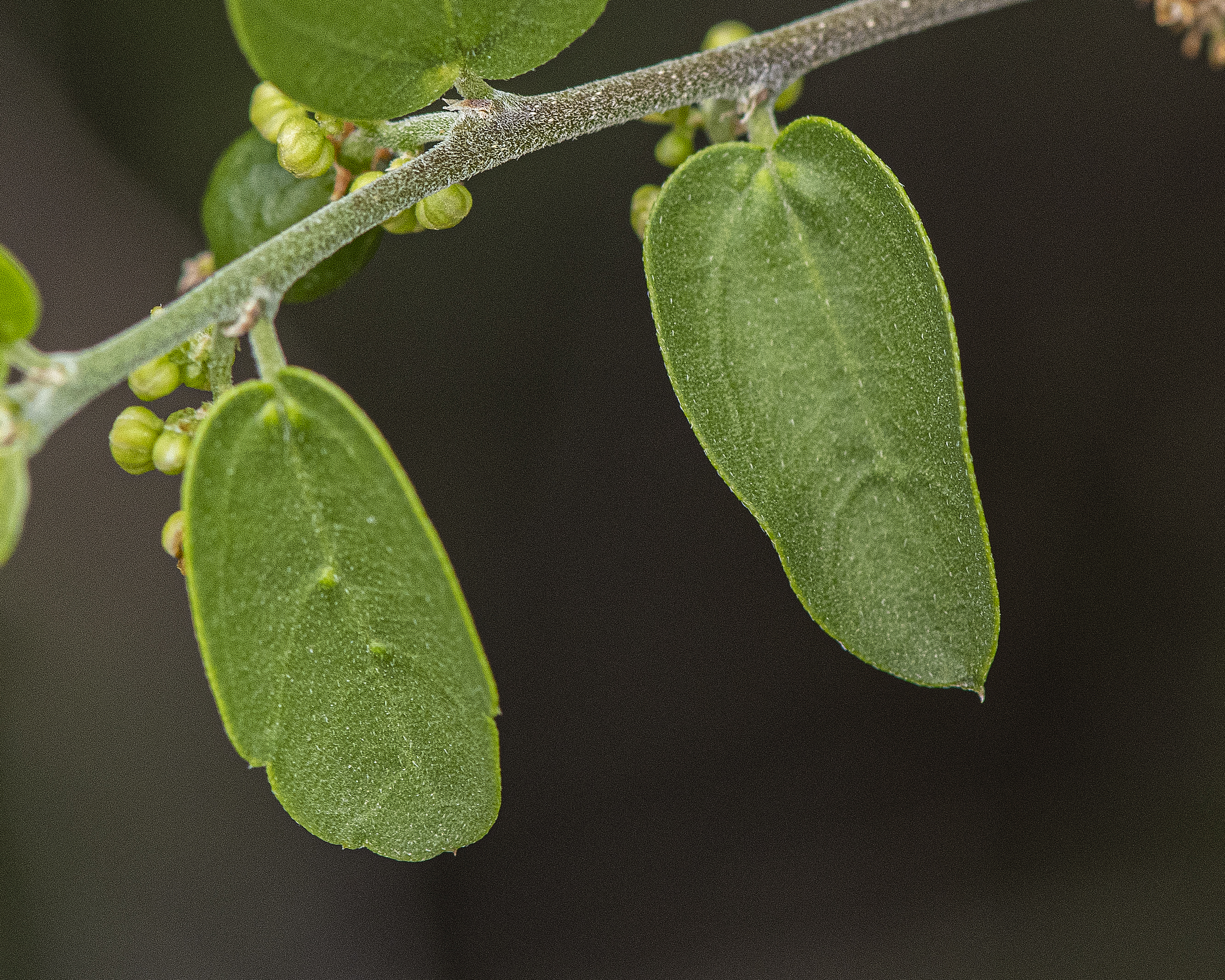
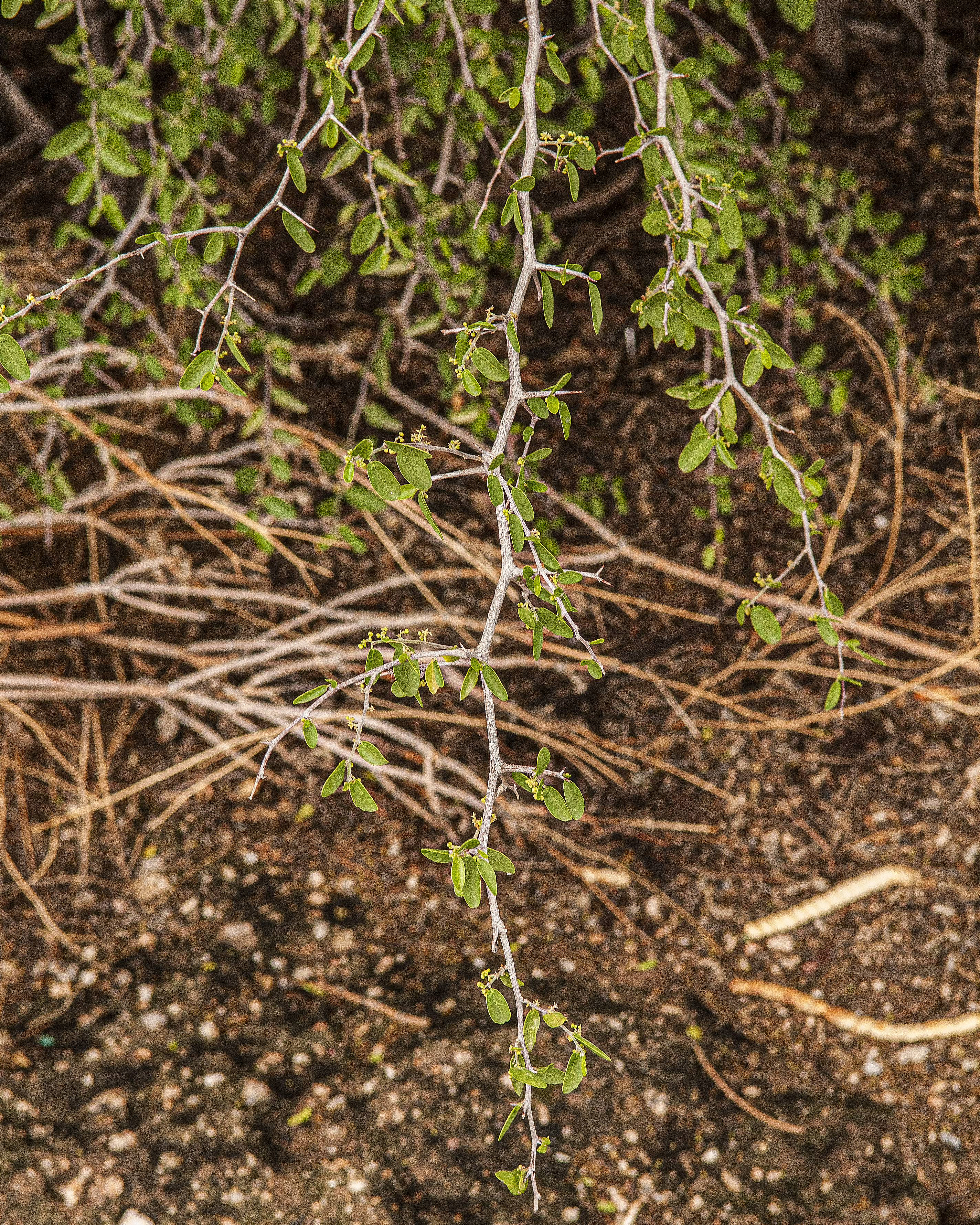
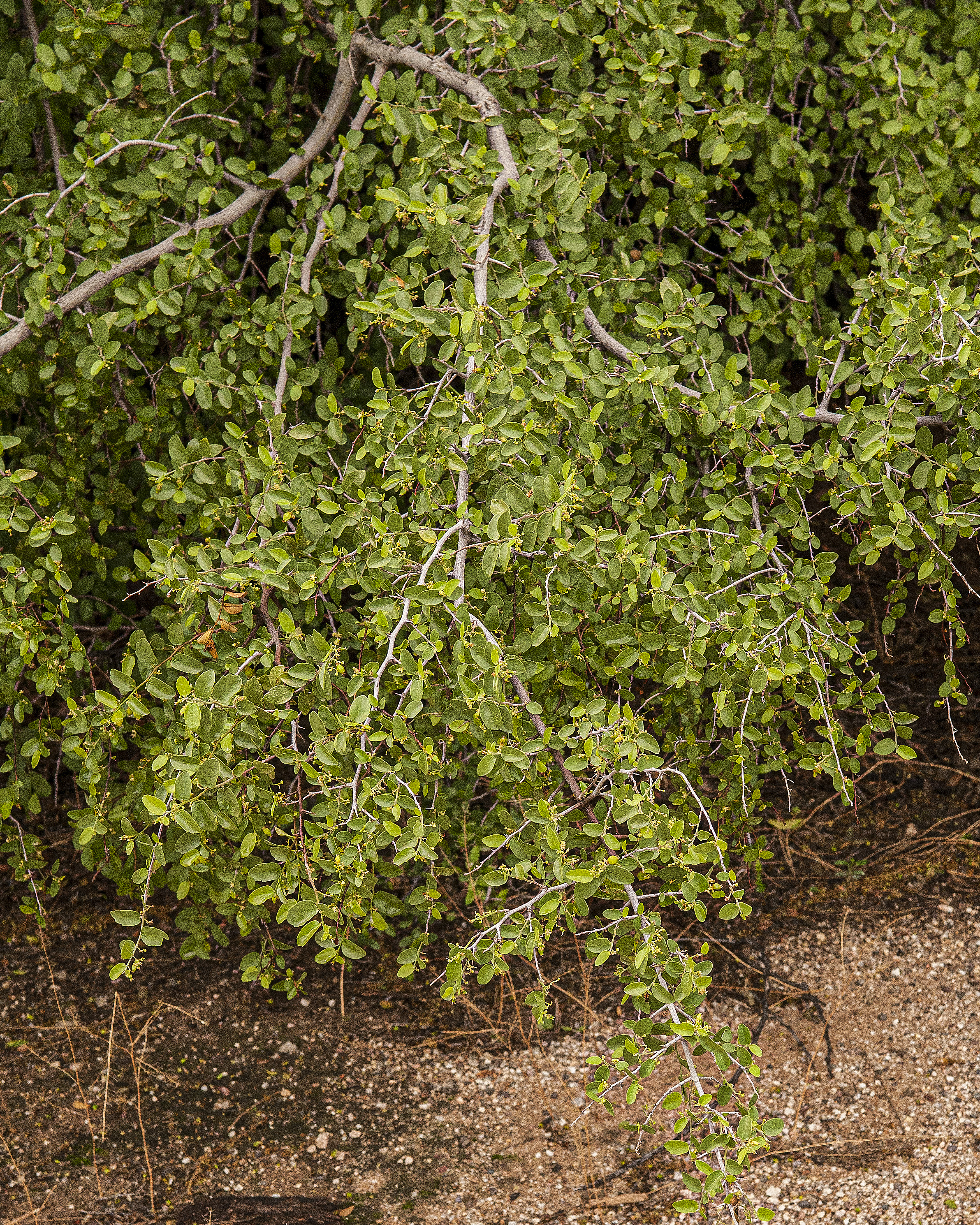
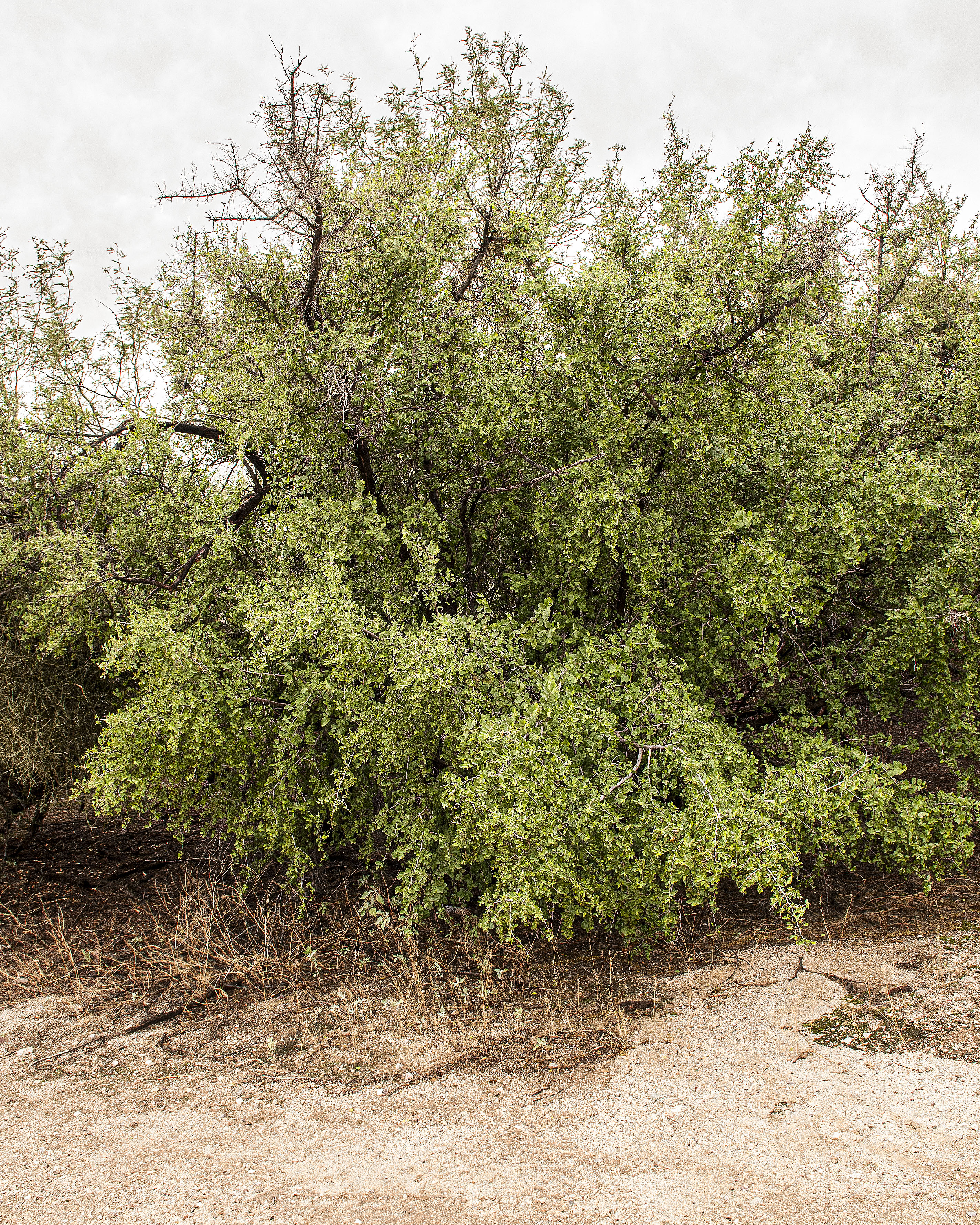 Sabino Canyon 9/28/19.
Sabino Canyon 9/28/19.
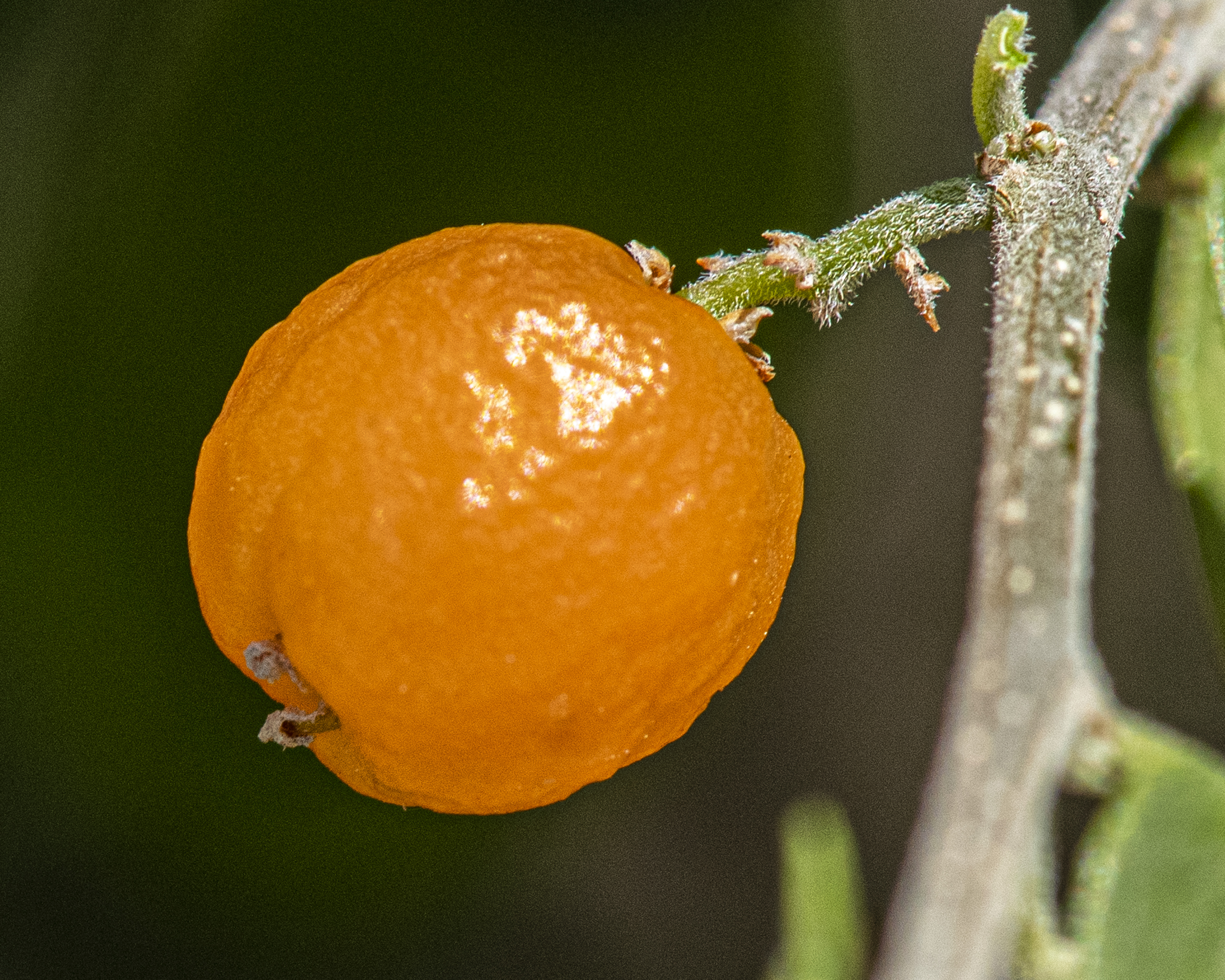
Wildflowers of Southern Arizona
Desert Hackberry.
Celtis pallida.
Hemp (Cannabaceae) Family.
Plant: large shrub; to 3 m tall, with thorns to 2.5 cm long; branches zigzag; bark gray, smooth. Leaves: evergreen; blades ovate to elliptic, symmetrical or nearly so, to 3(-4) cm long and 2(-2.3) cm wide, green above and below, thickish, without insect galls, the base rounded but sometimes slightly notched, the apex rounded to acute, mucronate or sometimes with a tiny apical notch; margin entire basally, then often crenate to serrate apically, a tooth often mucronate; veins not reticulate, the basal set of axils bearing domatia (small pits in which insects and arachnids often live); surfaces scabrous, the abaxial hairs many both on and in between veins with those between veins erect to appressed, antrorse, and weakly pustular. Infloresence: uniflorous or small cymes or fascicles, appearing with new leaves. Flowers: with pedicels, staminate near the base of the new spring growth, distally pistillate, the intermediate flowers sometimes perfect; calyx lobes usually 5-6, distinct nearly to the base; stamens 4-5, exserted, non-functional and usually shorter in pistillate flowers; pistil reduced in staminate flowers; styles 2, plumose. Fruit: DRUPES spherical to ovoid, orange, yellow, or red, 3-5 mm in diameter, on pedicels 1-5 mm long; the stones thick-walled. Misc: Usually in desert washes and riparian floodplains, often forming thickets; 400-1200(-1700) m [1300-4000(-5600) ft.]; fl. buds year-round, fl. Mar-Nov (especially Mar-Jun), fr. year-round, especially Apr-Jul and Nov-Jan. (Kearny and Peebles)
Santa Catalina Mountains
Sabino Canyon Recreation Area.
Location: Beside dirt access road behind visitor center.
9/25/19
Notes: 9/28/19 Sabino Canyon at entrance to Bear Canyon Trail.
Notes regarding flowers: According to various sources and communications, the flowers appear to be of three types - male (staminate), female (pistillate), and bisexual (perfect). The male flowers tend to be proximal on the branch, female flowers are distal, and bisexual flowers are located in between. So the plant is monoecious.
See SEINet Pictures and Description
See FireFly Forest Pictures and Description
More info from Naturalist Newsletter


 Female flower?
Female flower?
 Sabino Canyon 9/28/19. Enlarging ovary.
Sabino Canyon 9/28/19. Enlarging ovary.





 Sabino Canyon 9/28/19.
Sabino Canyon 9/28/19.
